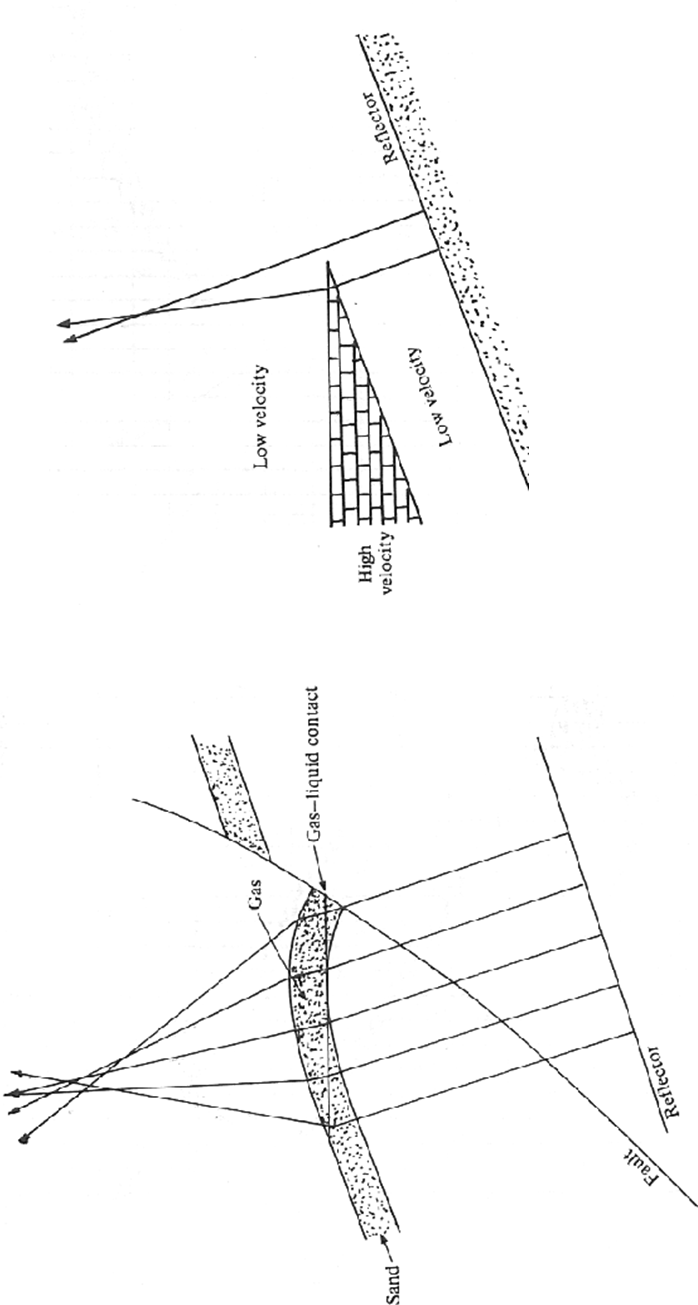![[*]](http://sepwww.stanford.edu/latex2html/cross_ref_motif.gif) ).
). (1) Irregular interfaces between spatially extended media with different velocity and/or absorption characteristics: (a) channels on the sea bottom caused by currents, former rivers, or glaciers; (b) positive landforms on sea bottom such as moraines (North Sea); (c) Irregular thickness of permafrost; (d) low-velocity eolian, fluvial or marine sediment covering karst features or other irregular erosion surfaces; (e) interfaces of plastic clay or salt bodies. In this case FEAVO can be hard to see because of the much more powerful illumination effects caused by interface undulations of a larger spatial wavelength than those which cause FEAVO.
(2) Small lenticular bodies of contrasting properties with the
surrounding medium. They may be filled with gas, in which case
absorption would play an important role. They can be small in all
directions, as would be the case with filled peat bogs, or they can be
elongated along one direction, such as gas sand-filled river channels
(small in cross-section) or lenses formed by gas-liquid contact inside
a fold associated with normal listric faulting, (left panel in Figure
![[*]](http://sepwww.stanford.edu/latex2html/cross_ref_motif.gif) ).
).
 |
(3) Termination of a relatively thin layer of highly contrasting
properties with the surrounding medium, either by tapering off
stratigraphically (right panel in Figure ![[*]](http://sepwww.stanford.edu/latex2html/cross_ref_motif.gif) ), or by ending abruptly
against a fault Hatchell (1999, 2000a,b). The latter case, illustrated by Figure
), or by ending abruptly
against a fault Hatchell (1999, 2000a,b). The latter case, illustrated by Figure ![[*]](http://sepwww.stanford.edu/latex2html/cross_ref_motif.gif) , is
interesting becayse it may occur much deeper (thousands of meters)
than the previously described ones, and the bodies causing the FEAVO
anomalies may have much sharper
interfaces.
, is
interesting becayse it may occur much deeper (thousands of meters)
than the previously described ones, and the bodies causing the FEAVO
anomalies may have much sharper
interfaces.
 |
|
Needed: realistic modeling of these FEAVO-causing geologic settings with a variety of plausible parameters (shape, size, depth, velocity, Q), in 2-D and 3-D, in order to estimate the range of parameters which results in FEAVO anomalies (source too small to be resolved by state-of-the-art velocity analysis methods used in production, yet too large and smooth to cause diffractions). This is a computationally-intensive task. The datasets obtained from modeling could be used as benchmarks for FEAVO detection and removal. |